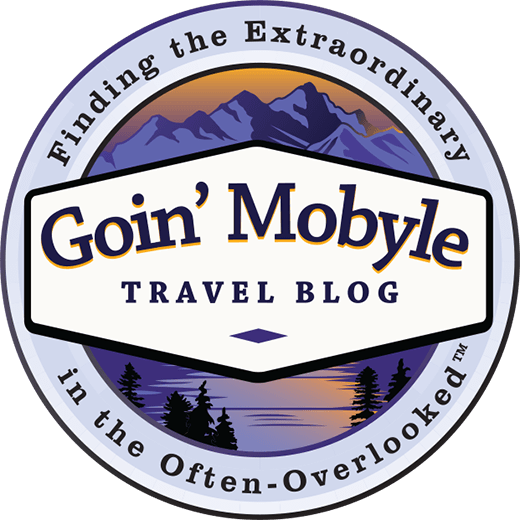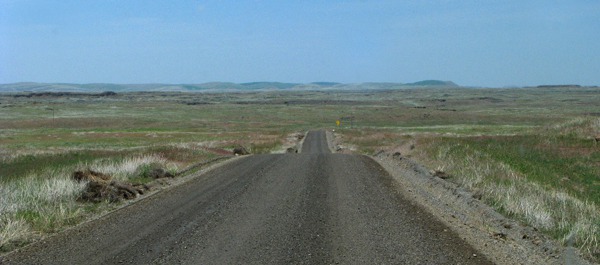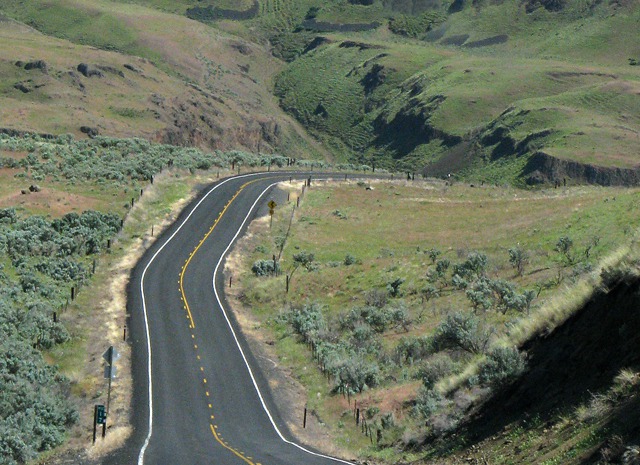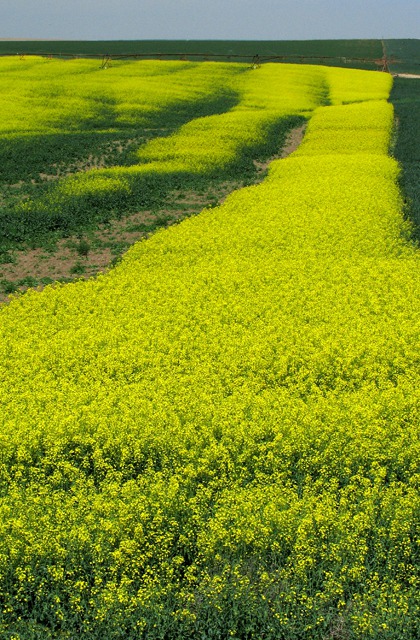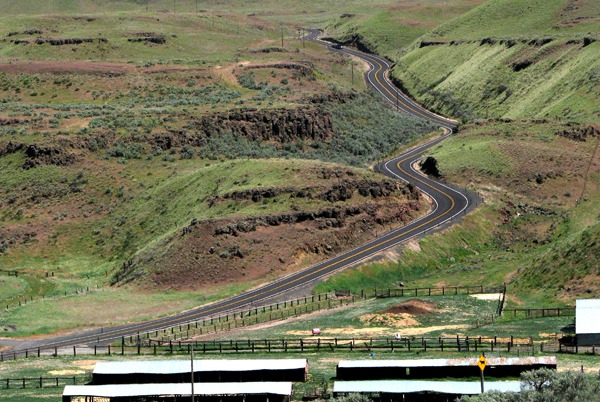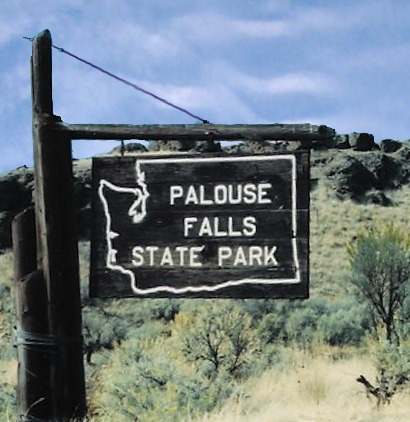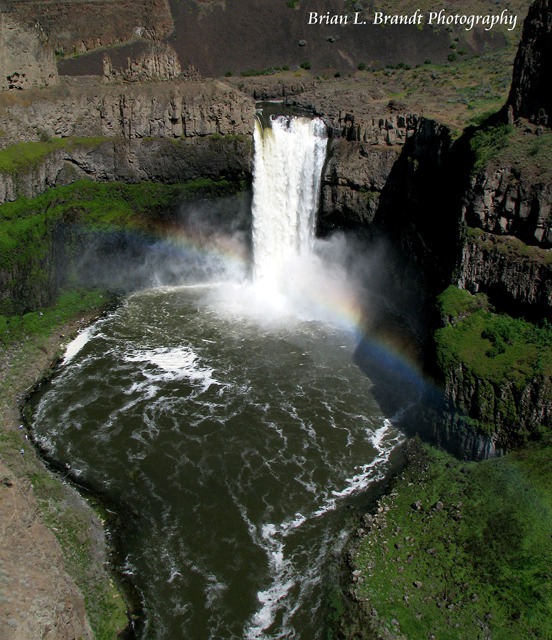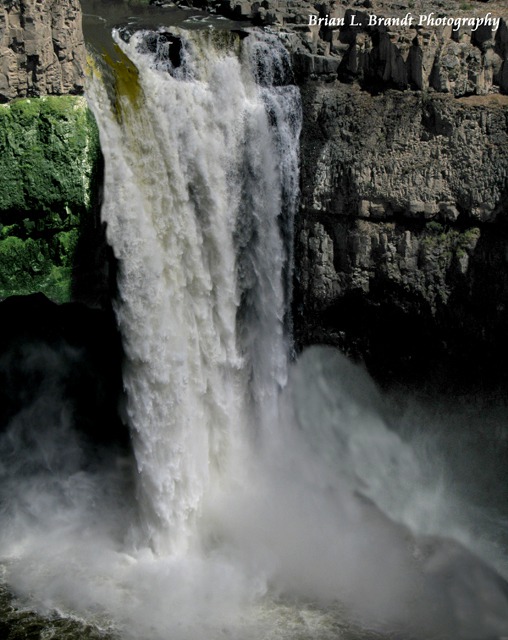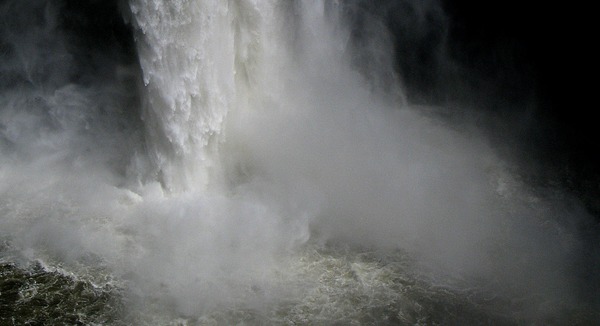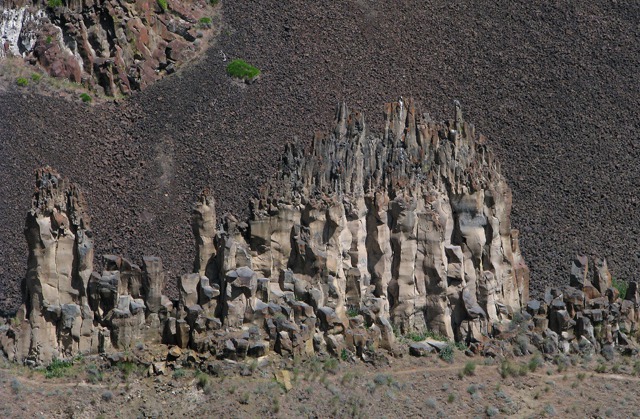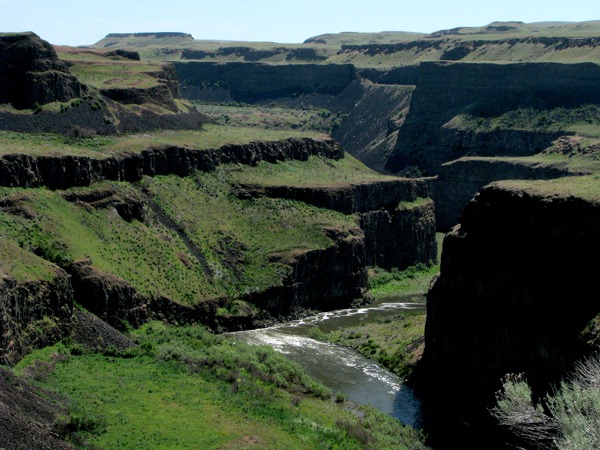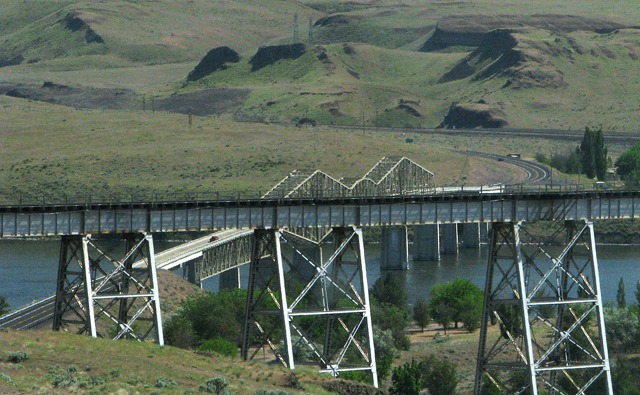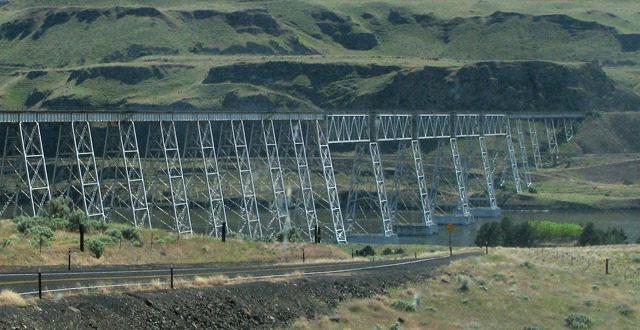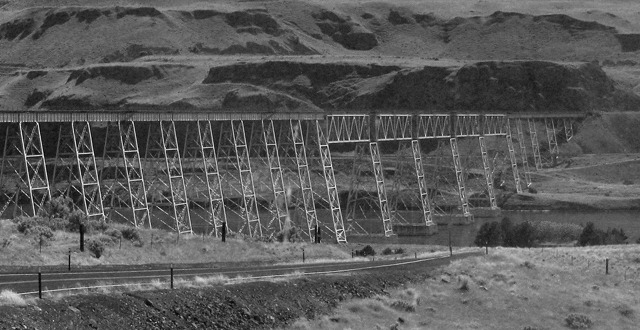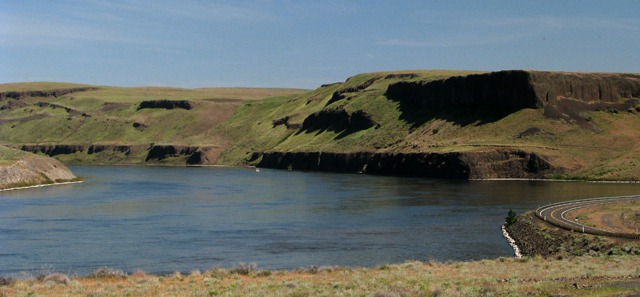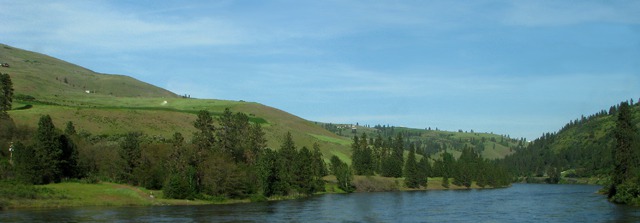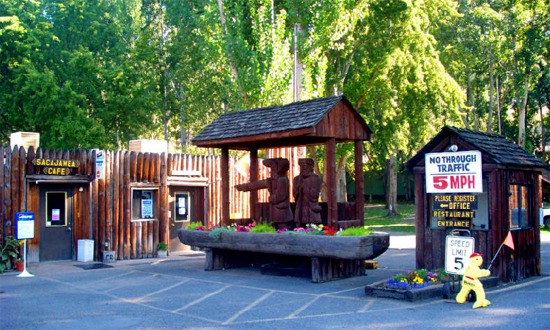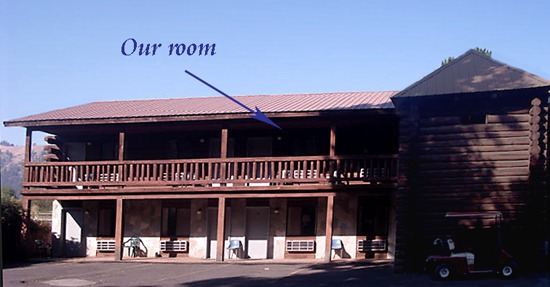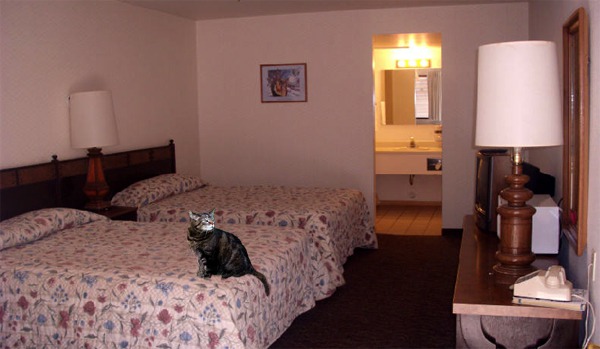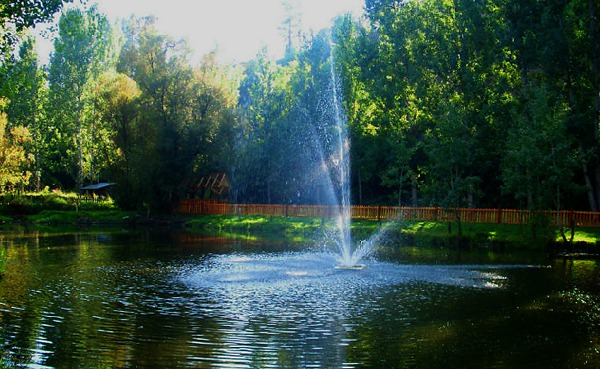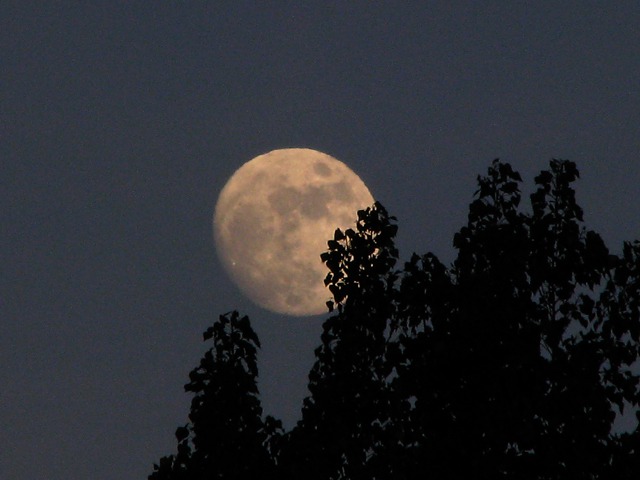According to Roadside Geology of Washington, the area is a veneer of yellowish windblown dust (loess). The Hills are old dunes of the richest soil found. The origin of the dunes is debatable -- are they the result of large clouds of dust blown off the glacial outwash to the north or clouds of dust blown from the extremely dry county of south central Washington and Oregon?
The area that is not farmed has a thin layer of soil over basalt and other volcanic flows -- it's a haven for sage brush and a wide range of native grasses. There is the best agricultural land mixed with some mighty tough country. Here the road follows the ancient course of the Palouse River in the channeled scablands. Sagebrush and rabbit brush grow in this dry country. The European settlement history of this area revolves around water and all the attendant irrigation projects and scams and the railroad as it pushed west. Today, a few remaining small towns dot the area, and huge fields or cattle grazing operations sweep in all directions. One of our goals on this stretch was to go see Palouse Falls on the Palouse River. There is a very nice state park there, and the day we got there it was "free weenie days" so there were lots of people sitting on the grass in the park enjoying a hot dog and a pop. It was already very hot, so Furry got out but stayed mainly in the shade. I wandered over to see the falls while Louise watched Furry, then I watched Furry while Louise walked over to see the 198 foot high falls. It was spectacular and well worth the side trip. The river cuts through the basalt on its way to join the Snake. The park is just a little over 100 acres, and the falls is 200 feet high. From the park's website, "The park was dedicated June 3, 1951. For many years the falls were called "Aput Aput," meaning "falling water." Later, the name was changed to commemorate the Palouse Indian culture. According to a story of the Palouse tribe, the Palouse River once flowed smoothly into the Snake. But four giant brothers, in pursuit of a mythic creature called "Big Beaver," speared the great creature five times. Each time Big Beaver was wounded, he gouged the canyon walls, causing the river to bend and change. The fifth time he was speared, he fought the brothers valiantly and tore out a huge canyon. The river tumbled over a cliff at this point to become Palouse Falls. The jagged canyon walls show the deep marks of Big Beaver's claws."The rock area surrounding the falls was a mixture of basalt and other flows, and it created some great formations. I would guess that you could spend an entire day, if you were so inclined, photographing or painting the geology of the area.
Below the falls, the river had carved a steep-sided canyon in the lava.
After we left the park, we followed the Palouse River to its confluence with the Snake River at Lyon's Ferry. Ferry service continued here until 1968. There was a network of activity at this road junction -- a railroad bridge, the highway bridge, power lines running over head. It was a forest of shapes and light patterns that I found very interesting.
Joso Railroad Bridge over the Snake
-
We rolled through Lewiston, Idaho as the sun was getting low, and after a gas and water stop at the edge of town, picked up the Clearwater River and headed upstream toward a resort or motel somewhere ahead. The day was very hot, and we couldn't leave Leesha in the car. She didn't like the heat one bit!
About 65 miles up the river in Kamiah, ID, we found the Lewis and Clark Resort and pulled in for the night.After we unloaded all the gear, we went for a walk near the pond on the grounds. The Resort has a swimming pool, meeting halls, and a number of other things. the pond area was nice because it gave Furry a cool place to go for a little walk before we went to bed.
As we walked back to our room, a full moon came out over the trees at the resort, signing off a great day on the road.
Test by Brian and Louise, Research by Louise, Photo by Brian. Copyright GoinMobyle, LLC, 2011
